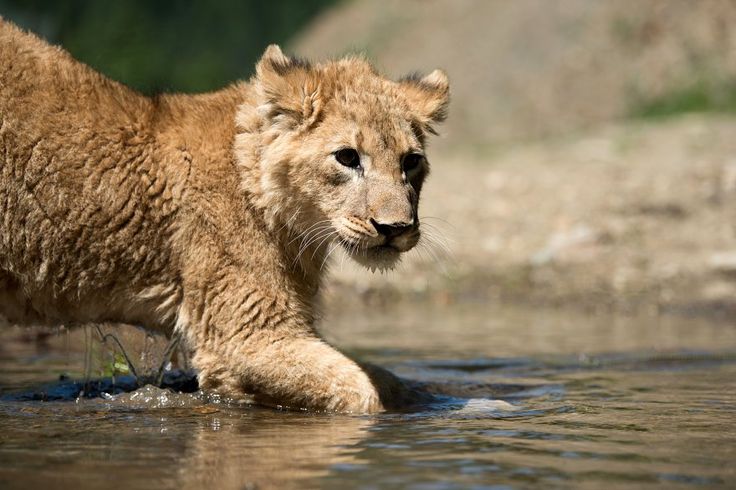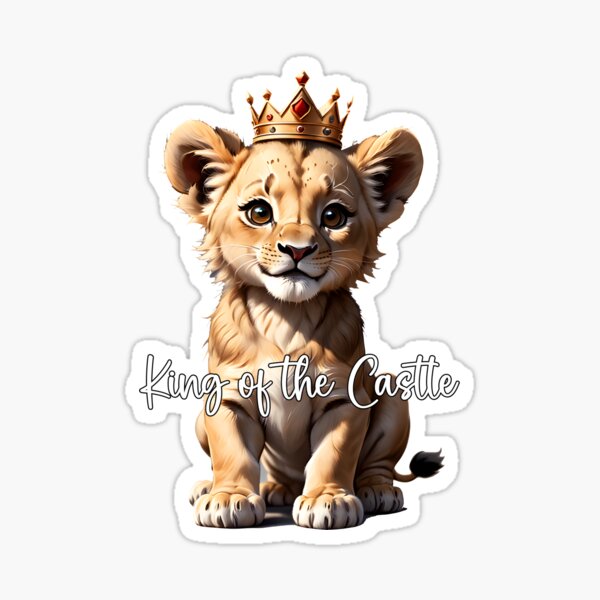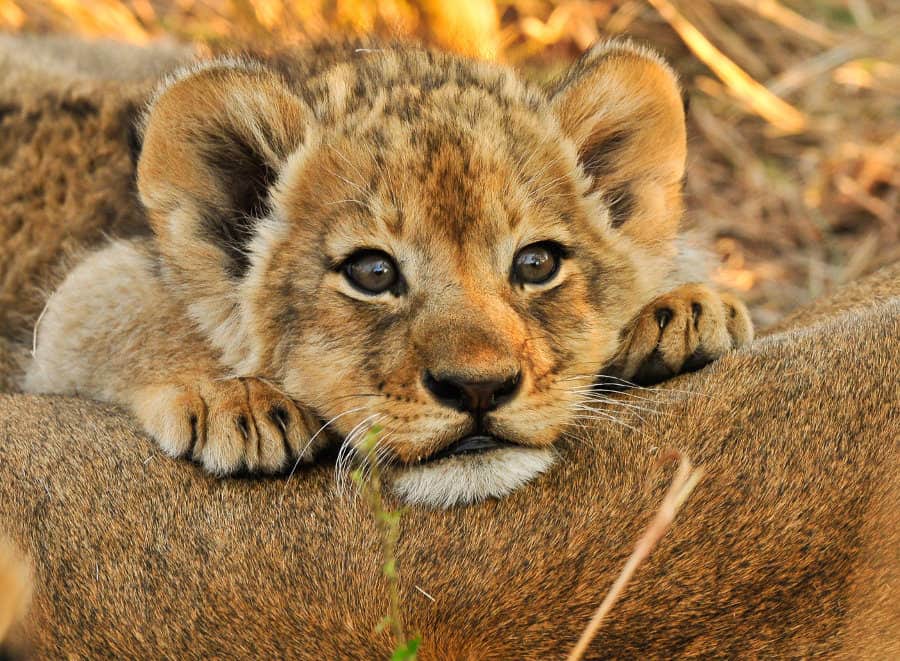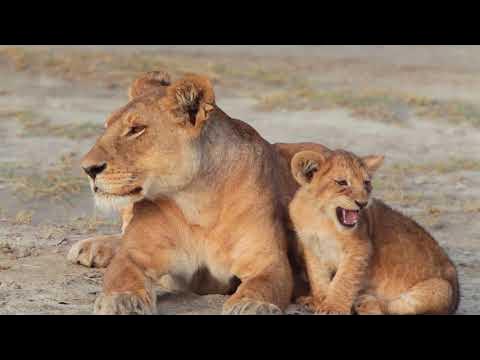Imagine a world where tiny, fuzzy creatures reign supreme – the hearts of both animal enthusiasts and casual observers alike. In this enchanting realm, lion cubs are the charismatic rulers, captivating us with their innocent charm and playful antics. These adorable young kings and queens of the animal kingdom hold a special place in our hearts, making us fall head over heels in love with their irresistible charisma. Join us as we embark on a journey to discover the captivating world of lion cubs and the awe-inspiring magic they bring.
Physical Appearance of Lion Cubs
Furry and Cute
Lion cubs are undeniably one of the cutest creatures in the animal kingdom. Covered in a thick layer of soft fur, these little bundles of joy are incredibly endearing. Their fur is usually a sandy or golden color, camouflaging them in the savannah grass where they spend most of their time. Their small size and rounded features make them irresistibly adorable, often melting the hearts of those who lay eyes on them.
Distinctive Features
While lion cubs may share some similarities in appearance with other members of the cat family, they do have their own distinctive features. One of the most prominent features of lion cubs is their innocent and expressive eyes. These captivating eyes, combined with their small round faces, give them an incredibly charming and almost innocent look. Additionally, lion cubs have small, rounded ears that perfectly complement their overall appearance. As they grow, their ears become larger and more prominent, eventually reaching their full size and enhancing their regal appearance.
Developmental Stages of Lion Cubs
Birth and Early Days
Lion cubs are born after an average gestation period of around 100 days. They usually give birth in secluded areas within the pride’s territory, where the mother feels safe. The cubs are born blind and completely dependent on their mother for care and nourishment. In the first few days of their lives, lion cubs rely solely on their mother’s milk for sustenance, which provides them with the essential nutrients needed for their growth and development.
Growth and Maturation
During their first few weeks, lion cubs grow rapidly, gaining weight and strength under their mother’s watchful eye. As they grow, their eyesight gradually improves, giving them the ability to navigate their surroundings with more confidence. At around three months of age, lion cubs begin to venture out of the den, exploring the world around them and becoming more independent. They start engaging in playful activities with their siblings and begin to develop their hunting instincts through mock hunts with their littermates.

Family Dynamics of Lion Cubs
Role of the Mother
In the lion pride, the mothers play a crucial role in the upbringing of their cubs. They are responsible for providing nourishment, protection, and guidance to their young ones. The bond between a lioness and her cubs is incredibly strong, with the mother displaying immense care and devotion. The lioness nurses and grooms her cubs, teaching them vital skills that will aid in their survival. She also acts as a disciplined leader, setting boundaries and teaching her cubs valuable lessons about social etiquette within the pride.
Sibling Interactions
Among lion cubs, strong sibling bonds are formed from an early age. Littermates engage in play fights, chasing each other around, and climbing trees, which helps them develop crucial skills necessary for their adult lives. These playful interactions also contribute to the development of their social skills, fostering cooperation and teamwork within the pride. Sibling interactions also help establish a hierarchy among the cubs, with the stronger and more dominant ones often taking the lead during playtime.
Role of the Father
While the mother has a significant role in the lives of lion cubs, the father’s presence is also important. Male lions, or “kings of the jungle,” may not actively participate in raising the cubs, but they play an essential role in protecting the pride and ensuring its survival. They guard the territory, ward off potential threats, and maintain peace within the pride. Occasionally, lion cubs may interact with their fathers, providing them with opportunities to learn hierarchical structures and observe adult behavior firsthand.
Socialization and Play
Importance of Play
Play is an integral part of a lion cub’s life, contributing to their physical, cognitive, and emotional development. Through play, lion cubs learn essential skills such as hunting techniques, social interactions, and coordination. It also helps them establish bonds with their siblings and other pride members, fostering a sense of belonging and cooperation within the group. Playtime also allows cubs to explore their surroundings, build confidence, and develop their instincts.
Types of Play
Lion cubs engage in various types of play, ranging from wrestling and chasing to pouncing and mock hunting. Play fights help them develop their strength, endurance, and agility, enhancing their chances of survival in the wild. They also engage in games of hide-and-seek, honing their stealth and tracking abilities. Through these playful activities, lion cubs gain a deeper understanding of their environment, acquire hunting skills, and learn how to navigate different terrains.
Socialization with Pride Members
As lion cubs grow, they gradually become integrated into the social structure of the pride. They interact with pride members of different ages, learning valuable lessons from the adult lions. They observe the behaviors of the adults, imitate their actions, and acquire vital skills necessary for their future roles within the pride. These interactions also establish familial bonds, creating a harmonious environment within the pride and fostering a sense of unity among its members.

Feeding and Hunting Skills
Mother’s Milk and Weaning
In the early stages of their lives, lion cubs rely solely on their mother’s milk for sustenance. The mother’s milk is rich in nutrients, providing the cubs with the energy they need to grow and develop. As the cubs reach around three months of age, the mother gradually introduces them to solid food, initiating the weaning process. This transition from milk to solid food marks a crucial milestone in the development of the cubs, as they start acquiring the skills necessary for independent survival.
Introduction to Solid Food
Once the lion cubs are introduced to solid food, their mother assists them in their first attempts at feeding. She brings back food to the den and allows the cubs to observe her hunting and feeding behaviors. The cubs learn by imitating their mother, gradually transitioning from observing to actively participating in the hunting process. At first, the mother provides small, easily manageable prey items, such as rodents and small antelopes, allowing the cubs to practice their hunting techniques and develop their predatory instincts.
Learning to Hunt
As lion cubs continue to grow and mature, their hunting skills become more refined. They practice their stalking techniques, coordination, and teamwork, often working together with their siblings to bring down larger prey. The cubs learn to anticipate the movements of their prey, patiently waiting for the opportune moment to strike. The mother’s guidance and the playful interactions with their siblings during mock hunts significantly contribute to the development of their hunting prowess.
Education and Training
Learning from the Pride
Within a lion pride, there is an inherent system of education that plays a vital role in the development of the cubs. The older pride members, including the mother, aunts, and older siblings, act as teachers and mentors to the cubs. They share their knowledge and experiences, teaching the young ones the ways of the pride. The cubs learn essential hunting techniques, social dynamics, and survival strategies by observing and interacting with the adult lions.
Parental Guidance
The mother and father, while having different roles, provide essential guidance to their offspring. Through their actions, the parents set examples and teach their cubs valuable life skills. They demonstrate hunting techniques, teach them to respect the hierarchy within the pride, and impart the importance of cooperation. With their watchful eyes, the parents correct any inappropriate behavior, ensuring that the cubs grow up to be well-adjusted members of the pride.
Skill Development
As lion cubs progress through different stages of development, their skills continue to improve. From honing their physical prowess to mastering social interactions, the cubs undergo a comprehensive learning process. They refine their hunting techniques, improve their coordination, and strengthen their relationships with other pride members. With each successful hunt and social interaction, the lion cubs become more adept at navigating the challenges of their environment.

Survival Challenges for Lion Cubs
Predators and Threats
Despite their undeniable cuteness and promising potential as future rulers of the savannah, lion cubs face numerous survival challenges. Predators such as hyenas, leopards, and even other male lions pose a threat to their wellbeing. These predators may target unattended cubs or attempt to eliminate them in order to establish their dominance. Additionally, human activities such as illegal hunting, habitat loss, and conflicts with livestock farming further endanger these young kings and queens of the savannah.
Competition within the Pride
While the pride provides a nurturing environment for lion cubs, it is not without its challenges. As the cubs grow and mature, they face competition from their siblings and other members of the pride. They must learn to assert themselves, establish their rank within the hierarchy, and vie for their share of resources. Competition within the pride can be intense, requiring the cubs to develop their physical strength, social skills, and problem-solving abilities to secure their place in the pride’s social structure.
Conservation Efforts for Lion Cubs
Conservation Organizations
In response to the threats faced by lion cubs and their species as a whole, various conservation organizations are dedicated to protecting and preserving these majestic creatures. Organizations such as the African Wildlife Foundation, Panthera, and the Lion Recovery Fund work tirelessly to conserve lion populations, raise awareness about their plight, and implement programs to mitigate human-wildlife conflicts. Through research, conservation initiatives, and community outreach, these organizations strive to ensure a brighter future for lion cubs and their habitats.
Habitat Preservation
One of the key conservation strategies for lion cubs is the preservation of their natural habitats. As human activities continue to encroach upon wild areas, lion populations are increasingly being squeezed into smaller and fragmented spaces. Conservation efforts focus on establishing and maintaining protected areas where lions can thrive and reproduce safely. By safeguarding these habitats, conservationists ensure that future generations of lion cubs will have access to the resources and space they need to grow and prosper.

Interaction with Humans
Tourism and Wildlife Safaris
For many people, the opportunity to see lion cubs up close in their natural habitat is a dream come true. Responsible wildlife tourism provides a chance for visitors to observe and appreciate these magnificent animals while contributing to their conservation. Wildlife safaris, conducted by experienced guides and within designated reserves, allow visitors to witness the playful antics of lion cubs from a safe distance, ensuring minimal disturbance to their natural behavior. This interaction between humans and lion cubs fosters a deeper appreciation for their beauty and inspires greater conservation efforts.
Wildlife Education Programs
Education plays a crucial role in promoting the conservation of lion cubs and the preservation of their habitats. Wildlife education programs, both within local communities and on a global scale, raise awareness about the importance of lion conservation. These programs help dispel myths, provide accurate information about lions, and highlight the ecological significance of these apex predators. By fostering a sense of empathy and understanding, these educational initiatives inspire individuals to take action and become ambassadors for the protection of lion cubs and their wild counterparts.
Symbolism and Cultural Significance
Lion Cubs in Mythology and Literature
Throughout history, lion cubs have captured the imagination of cultures around the world, becoming symbols of power, courage, and nobility. In mythology and literature, they often represent strength and leadership, embodying the principles of royalty and guardianship. Their portrayal in ancient civilizations, such as Greek mythology and African folklore, further reinforces their iconic status as young kings and queens.
Lion Cubs in Art and Media
The captivating appearance and regal nature of lion cubs have made them popular subjects in art, photography, and media. From famous paintings to wildlife documentaries, lion cubs have been celebrated for their beauty and charm. Their playful antics and heartwarming interactions with their siblings and parents make for compelling stories that resonate with people of all ages. Through various forms of media, lion cubs continue to inspire awe and fascination, becoming ambassadors for the conservation of their species.
In conclusion, lion cubs are not just adorable and charismatic creatures, but also important members of the delicate ecosystem they inhabit. From their physical appearance to their developmental stages, social dynamics, and hunting skills, every aspect of their lives deserves appreciation and protection. As we strive to conserve their habitats and promote coexistence, let us recognize the significant role these young kings and queens play in maintaining the balance and richness of the natural world.


